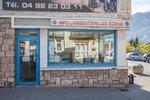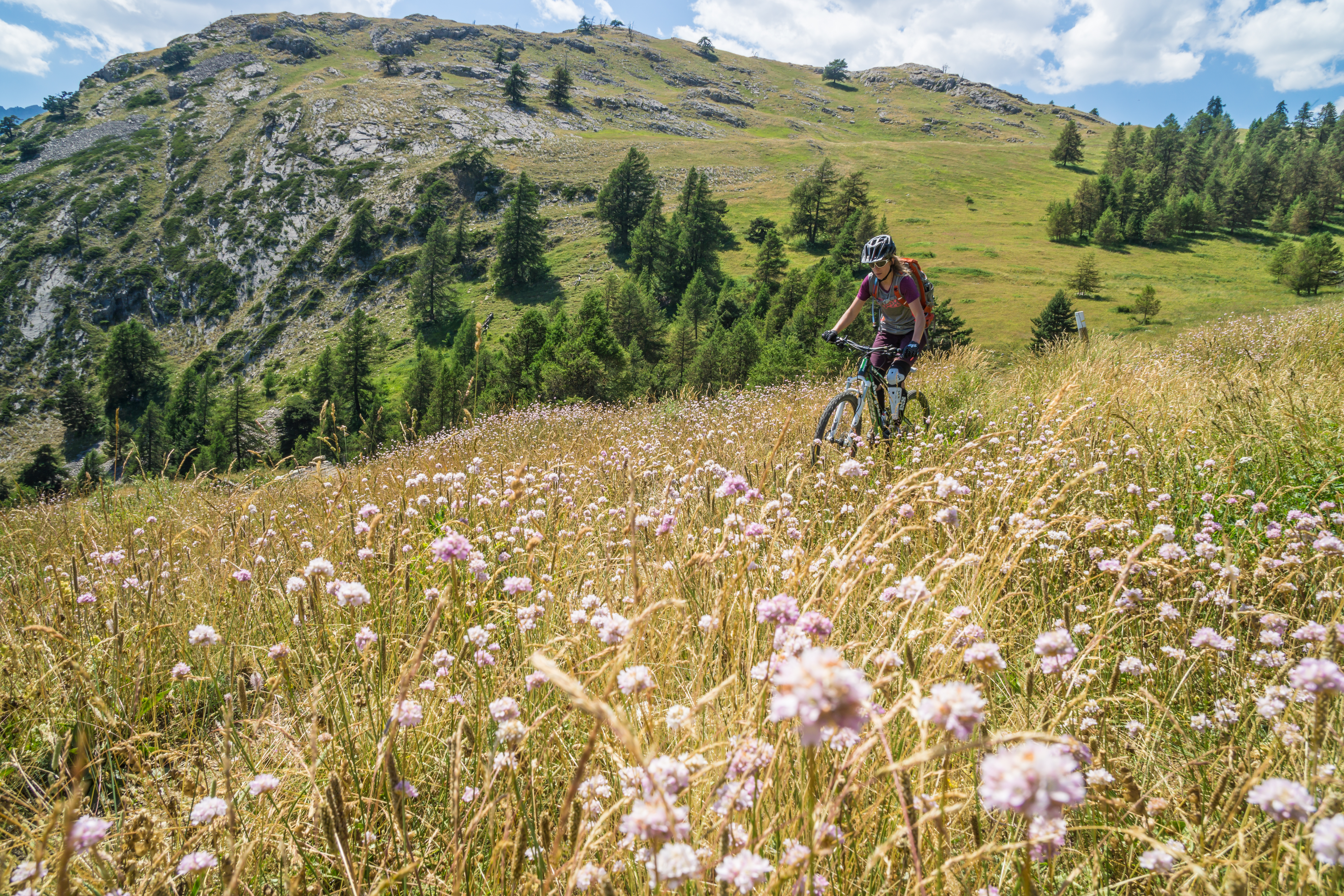
The Tour des Têtes (no. 16)
Description
The circuit starts right in the centre of town, not far from the bridge spanning the Durance. Head due south towards the train station.
- After passing the train station on your right and going under the railway bridge, follow the D423 towards the Fournel mines ("Mines du Fournel")
- At the mine car park, carry on along the narrow road leading into the little valley
- At the bridge, the Pont des Albrands, take the forest track that leads uphill to the Col de la Pousterle
- At the car park at the pass, follow the track running due east
- After the Champ des Ans, at 1,541 m, take the path on the right: the start of a great single-track descent
- When you come to the first houses in L'Argentière-la-Bessée, take the road on the left and then the road on the right to the next crossroads, which will bring you to the town centre
- Departure : Place du kiosque, L’Argentière-La Bessée
- Arrival : Place du kiosque, L’Argentière-La Bessée
- Towns crossed : L'Argentière-la-Bessée and Les Vigneaux
Altimetric profile
Recommandations
Rescue services contact details: Secours Montagne (Mountain Rescue): +33 (0)4 92 22 22 22 or 112
Show consideration for the work of farmers, livestock keepers and owners
Take your litter home
Do not take shortcuts across pastureland In mountain pastures, protection dogs are there to protect the herds from predators (wolves, etc.).
In mountain pastures, protection dogs are there to protect the herds from predators (wolves, etc.).
When mountain biking, I adapt my behavior by going around the herd, pausing and getting off the bike so the dog can identify me.
Find out more about the actions to adopt with the article "Protection dogs: a context and actions to adopt".
Tell us about your meeting by answering this survey.
Information desks
23 Avenue de la République, 05120 L'Argentière-La Bessée
Vallouise Park house
, 05290 Vallouise
Information, documentation, models, exhibitions, screenings, product sales and works of the Park. Guided tours for school, reservation required. The new Park House opened in Vallouise since June 1, and offers visitors an interactive permanent exhibition inviting to explore the area and its heritage. A temporary exhibition space will allow a renewed offer. Finally, the device is completed by an audiovisual room to organize screenings and conferences Free admission. All animations of the Park are free unless otherwise stated.
Transport
Public transport >> www.pacamobilite.fr
Consider car-sharing >> www.blablacar.fr
Access and parking
Parking :
Sensitive areas
Short-toed snake eagle
- Impacted practices:
- Aerial,
- Sensitivity periods:
- MarAprMayJunJulAugSep
- Contact:
- Parc National des Écrins
Julien Charron
julien.charron@ecrins-parcnational.fr
Peregrine falcon
- Impacted practices:
- Aerial, Vertical
- Sensitivity periods:
- FebMarAprMayJun
- Contact:
- Parc National des Écrins
Julien Charron
julien.charron@ecrins-parcnational.fr
Short-toed snake eagle
- Impacted practices:
- Aerial,
- Sensitivity periods:
- MarAprMayJunJulAugSep
- Contact:
- Parc National des Écrins
Julien Charron
julien.charron@ecrins-parcnational.fr
Short-toed snake eagle
- Impacted practices:
- Aerial,
- Sensitivity periods:
- MarAprMayJunJulAugSep
- Contact:
- Parc National des Écrins
Julien Charron
julien.charron@ecrins-parcnational.fr
Short-toed snake eagle
- Impacted practices:
- Aerial,
- Sensitivity periods:
- MarAprMayJunJulAugSep
- Contact:
- Parc National des Écrins
Julien Charron
julien.charron@ecrins-parcnational.fr
10 points of interest
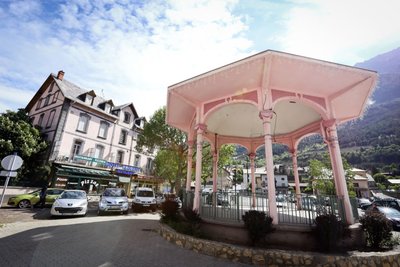
Kiosque à L'Argentière-La Bessées - Jan Novak Photography  History
HistoryThe old workers' housing districts
Workers' housing districts were built to house the many workers who were employed at the Péchiney factory. These districts have now been demolished. The architecture of the houses varied according to the status of the employee. A town hall, a cinema, a bandstand and churches were also constructed.

Le compresseur mobile - Jan Novak Photography  History
HistoryThe mobile compressor
In the mines, compressed air is used to remove dust and to create power for the drills. The mobile compressor holds compressed air in a resistant tank. This is brought to a high pressure via a pump (the compressor). The compressed air is then distributed to the mine machinery through a conduit system.
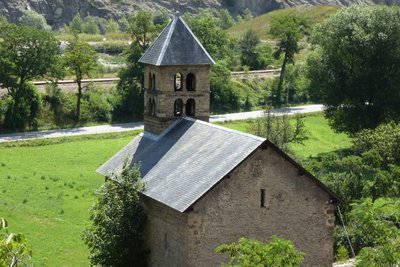
La chapelle Saint-Jean - Office de tourisme Pays des Écrins  Vernacular heritage
Vernacular heritageThe chapel of Saint-Jean
Built in the twelfth century and listed as a Historical Monument, the chapel of Saint-Jean is of Romanesque style. Tombs cut into the rock were discovered in recent archaeological excavations.
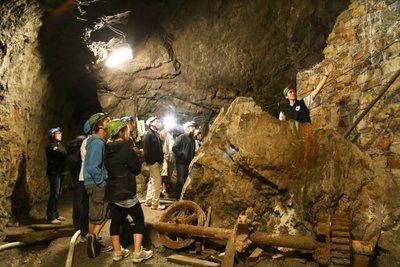
Les mines d'argent - Thibault Blais Photographie  Vernacular heritage
Vernacular heritageThe silver mines
The path passes close to the silver mines which gave L'Argentière its name (argent meaning "silver"). They were first worked in the early Medieval period and later abandoned before exploitation resumed again in the nineteenth century. They were finally closed in 1908. Since 1992, the site has been the subject of archaeological excavations, with major work to clear materials carried by the Fournel when in flood. They can be visited with a guide (by appointment), leaving the visitor in awe: how much ingenuity has been involved in extracting the silver-bearing galena!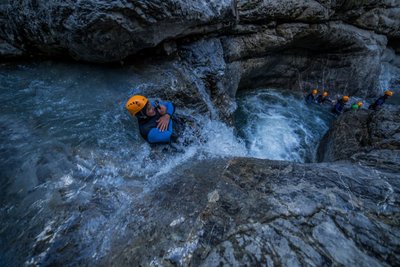
Canyoning - Fournel - Jan Novak Photography  Water
WaterThe Fournel
The Fournel mountain stream gives generously. Its water makes up a large proportion of the town's drinking water, supplies the irrigation canals, is used for hydropower and offers a recreational area valuable to the local economy in the form of its canyon, located in the gorge connecting it to the Durance. Being a mountain stream, it is impetuous, but sills have been built lower down and it has been dammed to prevent natural disasters. Numerous mountain streams have received the same treatment…
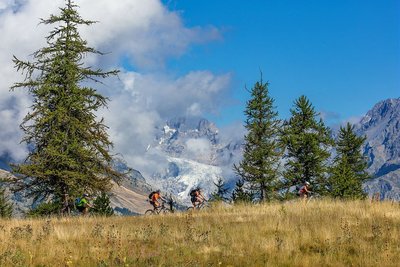
Col de la Pousterle - Bertrand Bodin - Parc national des Écrins  Pass
PassThe Col de la Pousterle
A pousterle (in the local high-alpine Occitan language) is a small gate, a postern. It comes from the Latin posterula which means back door. This place name is sometimes given to a pass, which could be described as a gateway between two valleys! The glaciers carved out this gateway through which an arm stretched between the glacier occupying the Fournel valley and the glacier flowing down the Vallouise valley.
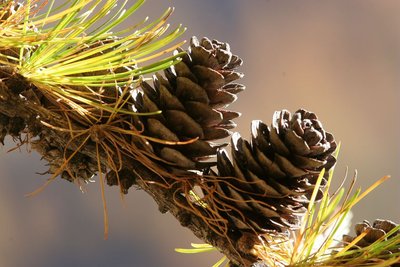
Mélèze avec cônes - Robert Chevalier - Parc national des Écrins  Flora
FloraThe larch
The symbol of the Southern Alps, this softwood tree loses its leaves in winter, and is swathed with gold and lights up the mountains in autumn. The larch forests are maintained by the grazing of flocks. Without them, other trees like the fir or other pine trees could grow, creating a different kind of forest. A pioneer species, the larch establishes freely in light conditions. Its solid rot-proof wood has always been used in the construction of houses.

Chauve-souris en vol en contre jour - Mireille Coulon - Parc national des Écrins  Fauna
FaunaForest-dwelling bats
Bats don't just live in caves! In summer, some forest-dwelling species shelter in old hollow trees or woodpecker holes during the day. Sometimes, the females also form little colonies here, where their young will be born (one bat pup per female). In this forest, which is still young with very few old trees, artificial roosts have been installed to help the bats and to facilitate their study.
La chouette chevêchette - Christophe Albert - Parc national des Écrins  Fauna
FaunaThe pygmy owl
The call of this small, nocturnal bird of prey can be heard in the spring, and also in the autumn when it can utter some peculiar sounds. Active during daytime hours and at dusk, the pygmy owl is a predator of passerine birds and small forest rodents. But when they spot it, passerines will come together in large numbers to mob it, so as to prevent any attempted surprise attack. It is restricted to mountain forests where it seeks out trees with woodpecker cavities where it builds its nest.
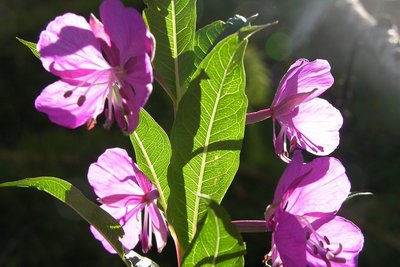
Epilobe en épis - Thierry Maillet - Parc national des Écrins  Flora
FloraThe rosebay willowherb
The forest tracks are edged with great swathes of a tall plant which has purple flowers arranged in loose spikes. The rosebay willowherb is a pioneer plant and favours road embankments and disturbed ground. In late summer, its very numerous seeds, each with a little plume, float away en masse glowing in the advancing twilight…
Source

Report a problem or an error
If you have found an error on this page or if you have noticed any problems during your hike, please report them to us here:

